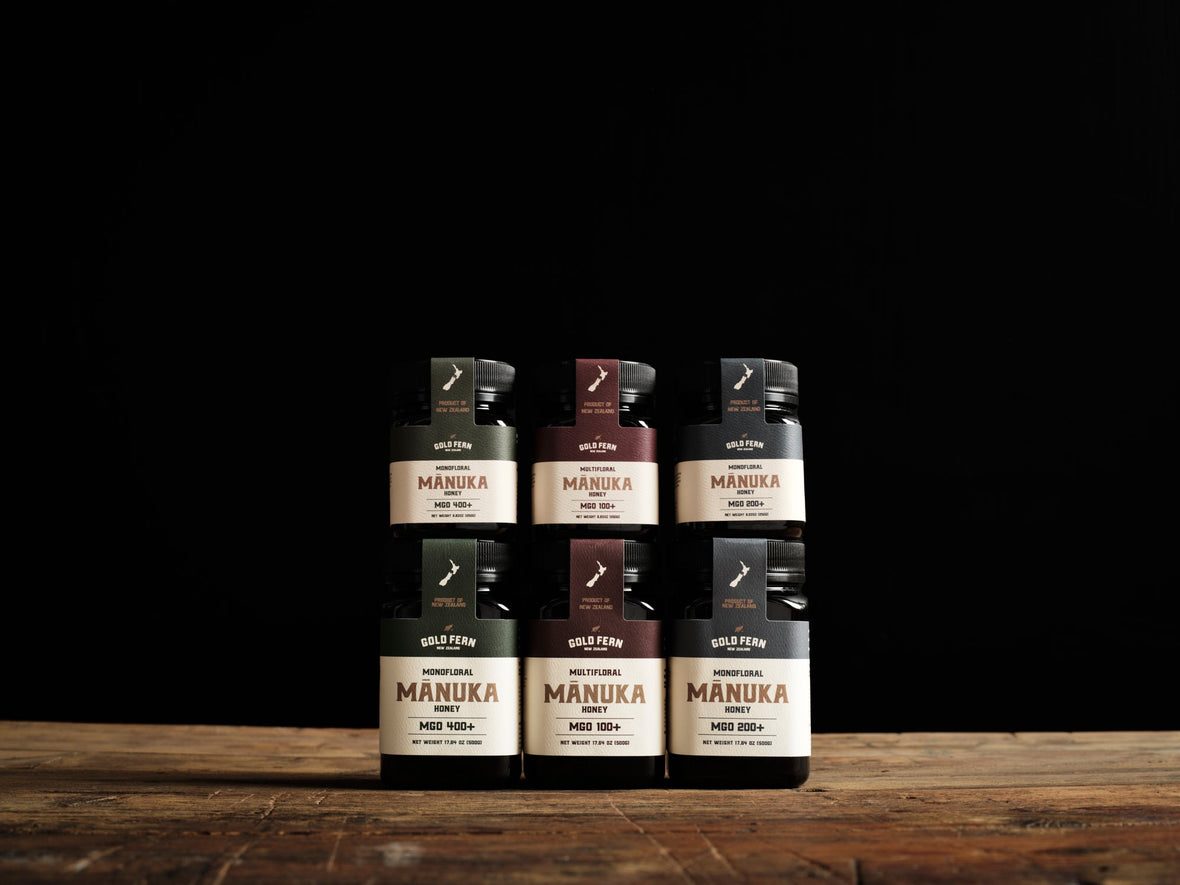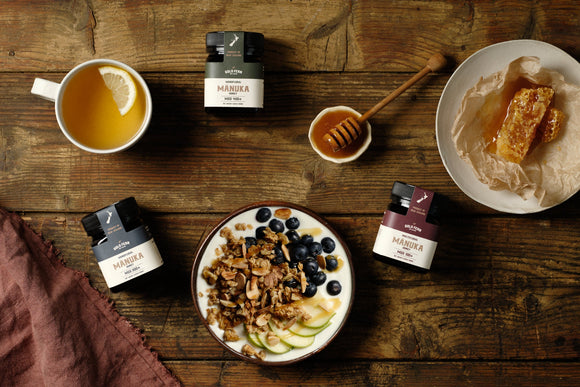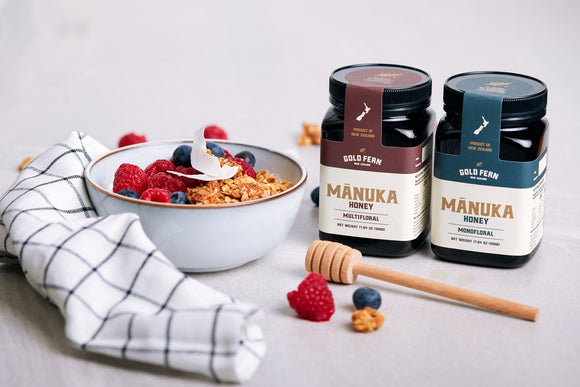
What is MGO in Manuka Honey? Here's Why It Matters
What is MGO in Manuka Honey?
If you’ve ever picked up a jar of Manuka honey and seen something like MGO 100+ or MGO 400+ on the label, you might have wondered — what does that actually mean?
MGO stands for methylglyoxal — and it’s the compound that gives Manuka honey its uniquely powerful properties.
The Active Ingredient That Sets Manuka Apart
Most honey has natural antibacterial qualities. But Manuka honey is different because it contains methylglyoxal, a compound formed in the nectar of the Manuka bush and concentrated by the bees during honey production.
The higher the MGO number, the more potent the honey.
-
MGO 100+: great for everyday wellness
-
MGO 200+ to 400+: more targeted use, like immune support or skin applications
-
MGO 500+ and above: high-strength, often used in smaller amounts
These numbers aren’t just marketing — they’re backed by lab testing.
Why MGO Matters
MGO levels give you a way to compare the strength and potential bioactivity of different Manuka honeys. It’s especially helpful if you're using honey for:
-
Immune support
-
Skin health
-
Digestive balance
-
Natural wound care
It’s also a sign of authenticity. Real Manuka honey from New Zealand is always tested for MGO and clearly labelled.
Is More Always Better?
Not necessarily. The best MGO level for you depends on how you’re using it:
-
Lower MGO (100–200) is ideal for daily use and general wellbeing
-
Mid-range (200–400) suits those wanting a bit more potency
-
High MGO (400+) is often reserved for more intensive or topical use
At Gold Fern Honey, we offer a range of MGO levels — all raw, tested, and traceable — so you can choose what fits your needs best.
Final Thoughts
Understanding MGO gives you the power to choose the right Manuka honey for you. It’s not just a number — it’s a measure of quality, strength, and how well the honey has been preserved from hive to jar.
Explore our MGO-rated Manuka honeys HERE and find the right strength for your needs.


